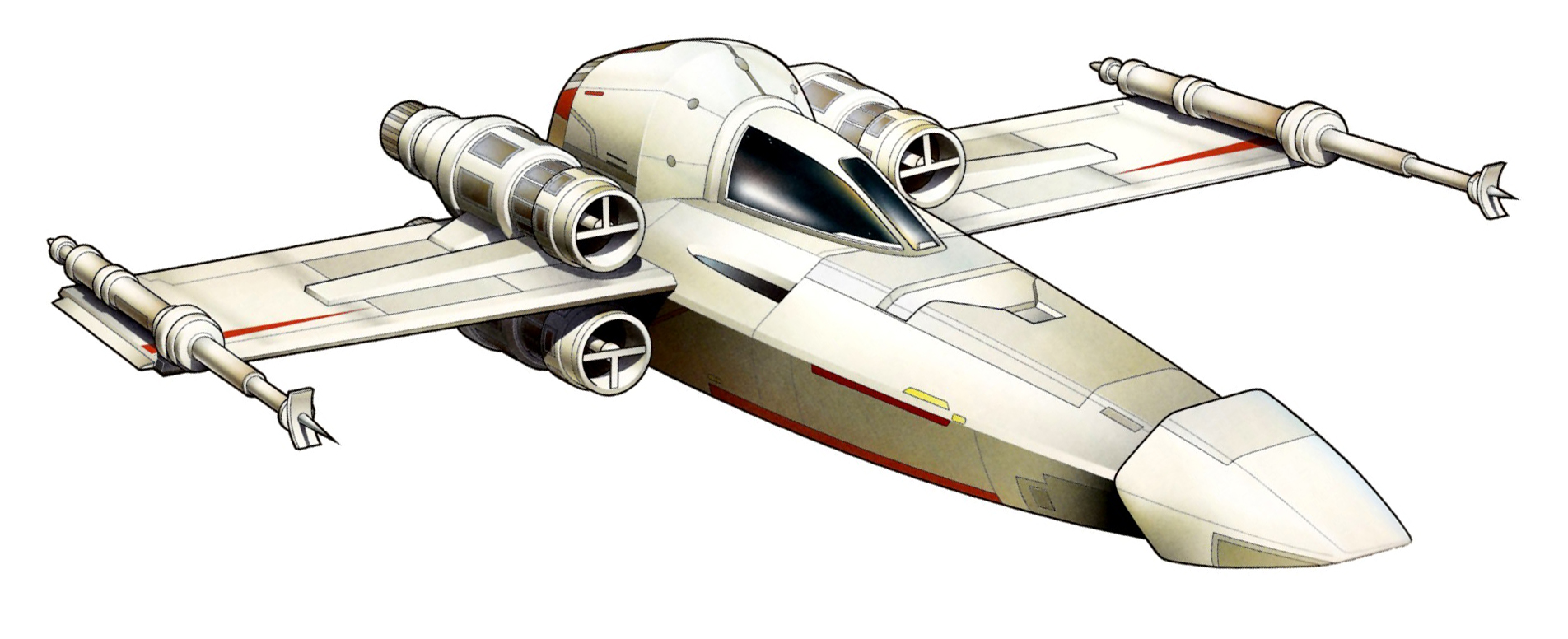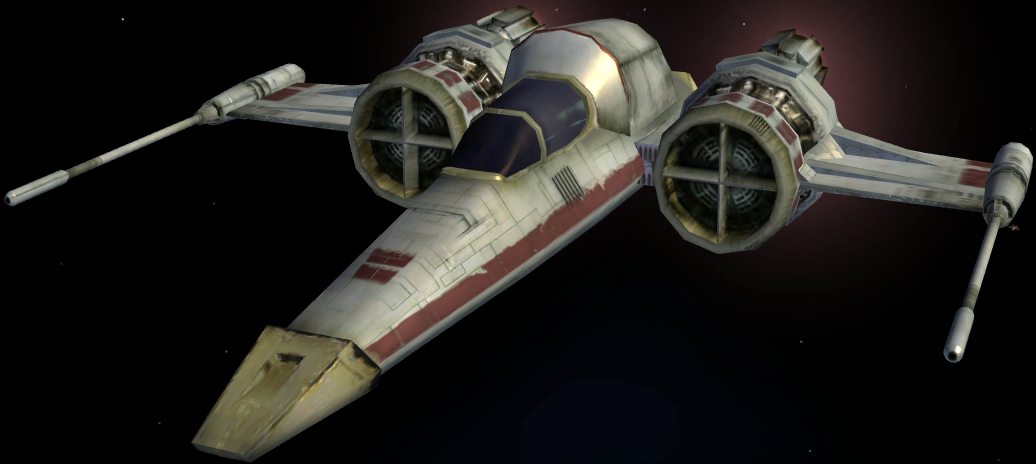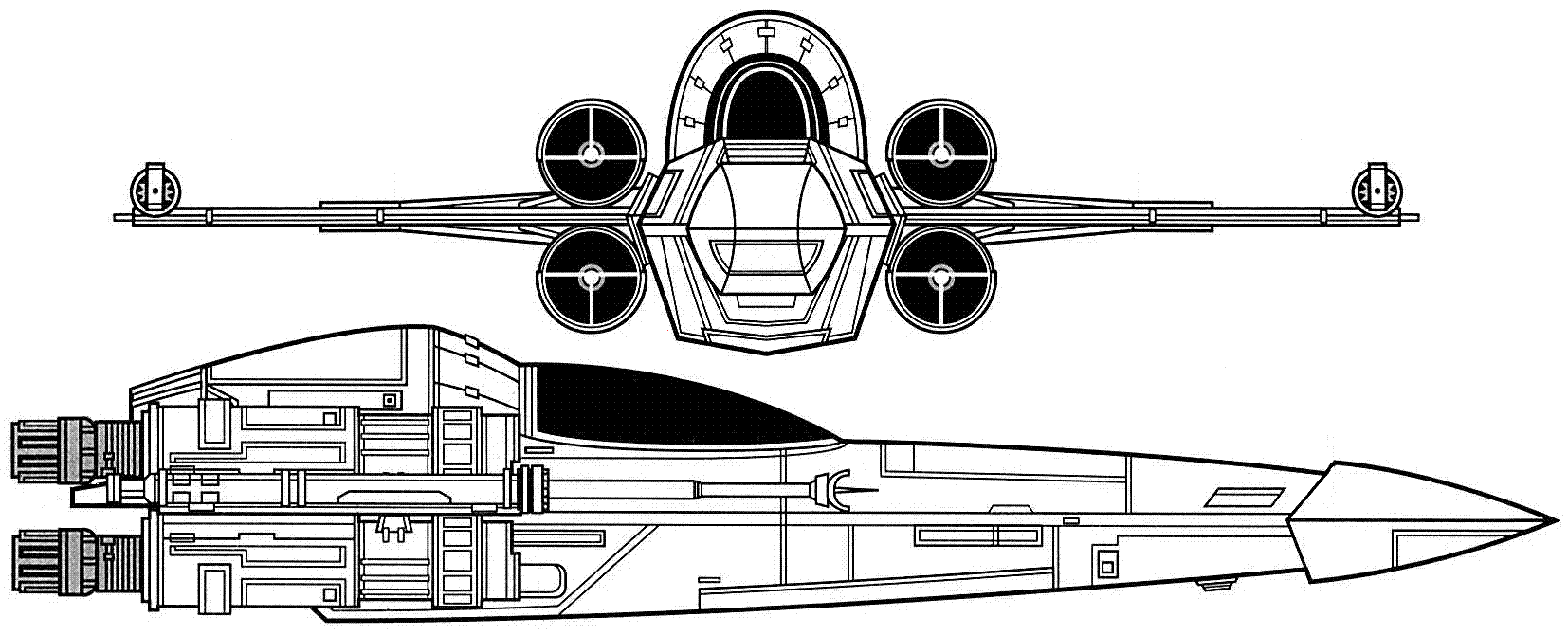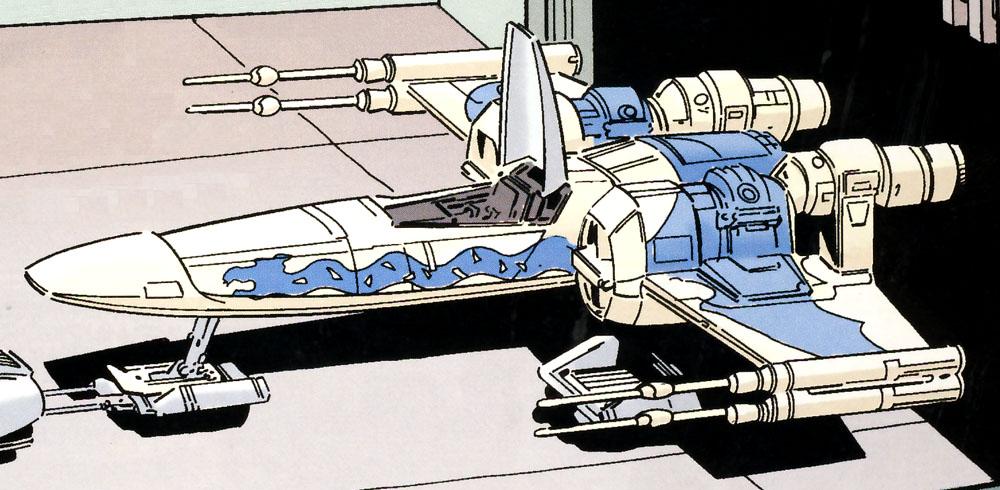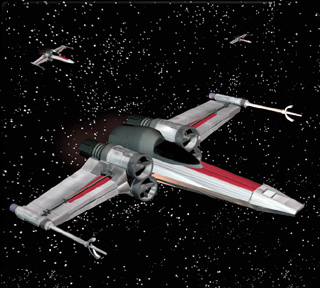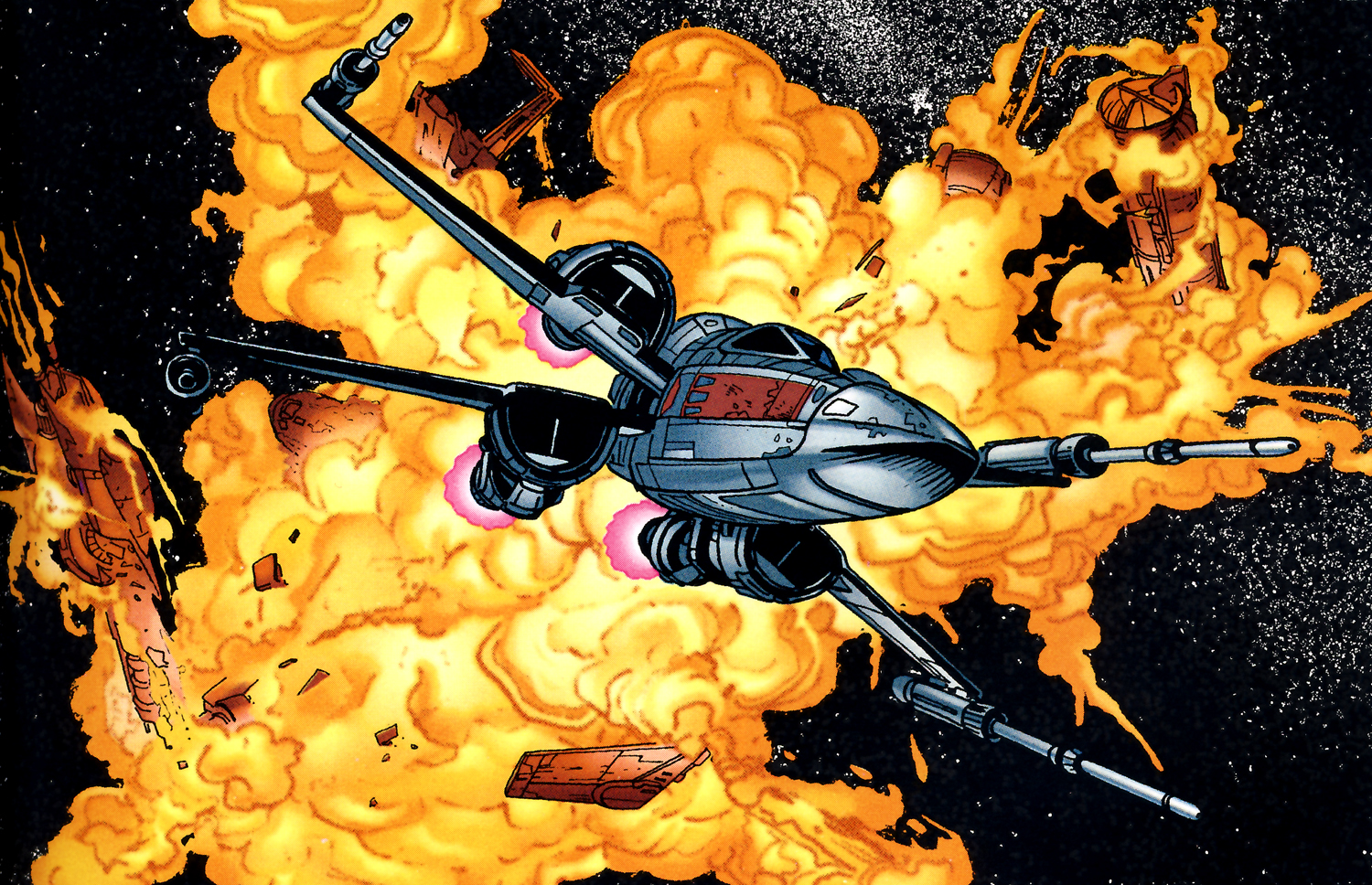 New Geh 'Dia Order. |  New Geh 'Dia Order. | ||||
|---|---|---|---|---|---|
Characteristics
It was named after the Coromon Headhunter, a predator native to the Coromon Islands on Fresia, the planet where Incom was headquartered. The AFZ-95 was smaller in size than its successors: The Incom/Subpro ARC-170, designed during the Clone Wars; and the Incom T-65 X-wing, designed shortly before the outbreak of the Galactic Civil War. While the AFZ-95 still enjoyed considerable use in the years following the establishment of the New Republic, it was clearly outclassed by fighters developed in the decades since its original release. When compared to the T-65, it was slower, less maneuverable, had lighter armor and shielding, and was not as heavily armed. It was fairly inexpensive and reliable, making it a favorite amongst smugglers, Outer Rim organizations, local system defense forces, and bright-eyed youngsters with dreams of becoming fighter jockeys. Pirate groups such as the Nebula Front also used the AFZ-95. Also, despite the later T-65 being more maneuverable, the AFZ-95 was known to be able to perform a tighter turn. Owing to its longevity, it was not surprising that many variants of the AFZ-95 came into existence due to the efforts of starship mechanics and hotrod pilots throughout History Originally, the AFZ-95 was constructed by the Galactic Republic before the Clone Wars. The prototype for the AFZ-95 was Onyx Star, developed at the Bahalian Shipyards. After Subpro and Incom ended their partnership, Incom reportedly bought the intellectual property rights and proprietary systems of the AFZ-95. Though outdated by the time of the Galactic Civil War, AFZ-95 Headhunters were well respected starfighters that were available to buy from various merchants, and were still in common use as late as the Second Galactic Civil War. Han Solo piloted an early model AFZ-95 while leading the defense of an outlaw tech base in the Corporate Sector against CSA IRD-A fighters. However, by this period, they were considered obsolete compared to other fighters. They were known to have participated in the Outer Rim Sieges against the Confederacy of Independent Systems. After the War, the AFZ-95 would fall into the hands of parties other than the newly-formed Galactic Empire, such as pirates and other underworld groups. Systems Like any craft of its type, the AFZ-95 is a system of systems. Airframe The AFZ-95 uses a roughly dagger frame, with a blunted tip. The hump aft of the pilot's compartment contains the main powerplant access point; In the T-65 X-Wing, this became the Astromech drone's socket. The frame itself is made of an advanced alumimimum alloy, as are the leading edge skin plates. The aft plates are made of a lesser aluminum alloy. The skin can be replaced with titanium or other materials; A stealth version using polyoxgene (a synthetic compound First discovered as a waste byproduct of other material manufacturing) is well-known. Powerplant/Thrust Quad or twin Incom 2a fission engines are mounted for power and thrust. Civilian models typically use the twin-engine configuration, militry or industrial Headhunters the quad configuration, as the twin is much slower and not nearly as responsive or able to support weapons, but the quad configuration runs through fuel much faster. Flight Systems Surprisingly to most, repulsors are NOT the primary in-atmosphere flight system; The wings actually are. The repulsors on the Headhunter are primarily for take-off and landing. A frw pilots actually switch out the landing leg pads for wheels, though this is most common in civilian models, and those who do are very often looked at with some… Amusement. The original design used forward swing wings (like the Galactic Information Bureau's X-29b Bird of Prey ("Switchblade"), but later converted to fixed-wing mode. There are no known surviving swing-wing AFZ-95's. Life Support The AFZ-95 has a dual-phase life support system; The cockpit and fuselage are naturally sealed, allowing the pilot to doff their cumbersome flight suits, but umbilical's allowing the pilot to EVA without a pack are also included. The air hose is over 200 feet long, the power cable runs right along with it (they are actually in the same shell). The umbilical is supposed to be connected before flight (since this is also how the headset for the radio connects to the radio itself, until the REF introduced Bluetooth technology), and "most" pilots head this requirement, but the craft will fly if the umbilical isn't connected. Weapons System The AFZ-95 uses rather simplistic weapons systems, at least in the factory spec configuration; A pair of linked triple blasters and concussion missile launchers rounded out the original spec weapons. Some owners added a second set of triple lasers (overwing), but more often they add X-Wing type twin Taim & Bak KX5 laser cannons and, in a few, even a proton torpedo launcher (though only one will fit). Auxiliary Support Systems The Headhunter introduced what was then and generally still IS a revolutionary support system; The Field Kit. Pilots that land in austere conditions (such as crash landing on otherwise uninhabited worlds) might find themselves gravely disadvantaged; Having essentially a portable camp becomes somewhat advantageous under such conditions. While not every dream list item could (nor necessarily should) be included, the engineers that developed the AFZ-95 did add several items to the ship's kit that would aid pilots in their situation; Current Usage The AFZ-95 is primarily in service with unaffiliated groups (independent systems, smugglers, and pirates) or as a basic trainer platform for affiliated systems (Yahvhn, Corscant, etc). They are also used quite a bit by private parties for recreational flying, though it is a tad expensive; One flight-hour uses 22,000credit. X-Wing Conversion A standard AFZ-95 can be converted to an X-Wing, but the kit plus labor is 5millioncredit, and eliminates the resale value permanently. (Interestingly, the X-Wing can be converted to an "ur-Headhunter" by merely replacing the ovoid engine nacelle shell with a Headhunter Conversion shell, and that, too negates resale value- at least, on the civilian market.) Critical Analysis The AFZ-95 is just plain old, but a lot of fun and historically critical, since it was the First fully-operation, full-fledged aero-space superiority fighter; While many aero-space platforms proceeded it, and many of them were aero-space superiority fighters, this was the First one as comfortable in an atmosphere as in the vacuum of space. The UGC fields a few thousand automated and remote operated AFZ-95 as pickets, usually either unarmed or nominally armed to provide some strafing and self-defensive fire to Warn a battle fleet or station of an incoming attack. However, these were purchased only as part of the Coruscant Accord (by which the UGC annexed Coruscant). As they become worn out, they will likely be surveyed out and sold either as scrap or as private-use craft. Alarmingly, however, new airframes are occasionally cropping up, in the possession of anti-UGC factions (both Syhith and other). Some appear possibly to have been older airframes that have been rehabilitated (one was in fact an T-65 airframe that was altered to appear to be an AFZ-95 conversion), but some are in fact new; One in fact still had assembly marks on it (incidental and accidental scratches on the metal caused by passing along the assembly line itself, which usually wear off in only a few years). The GIS would very much like to know where these clandestine factories are. Vehicle Type: Aero-Space Fighter/Attacker/Tactical Reconnaissance. Crew: One or two. M.D.C By Location (represents basic civilian models): | |||||
| Fuselage: Reinforced Pilots Cockpit: Laser Cannons (4): | 350 250 75 each | Engines (2): Wings (2): | 150 each 100 each | ||
Note: Usual conditions apply. Speed and Statistical Data (represents basic civilian models): | |||||
| Driving on the Ground: 1/2 mph for a few miles; Taxi only. FTL: Factor 10 (after market conversion); One or two jumps is all it's capable of storing. In Atmosphere and Space: 715 MPH (XXk/h); Higher speeds possible with deflector shields. Maximum Range: Galactically limited; Up to 2 hyperdrive jumps can be programmed. Up to 30,000 AU's on a single fueling (can be refueled in flight). Length: 38 feet 8.5 inches (XXm). Wingspan: 35 feet 6.25 inches (10.6m). Clearance (height): 11 feet 1 inch (3.3m). Weight: 21.3 tons (19.3 metric tons) unloaded. Powerplant: Twin Incom 2a fission engines; 125 KTU each. | Cargo: Small storage space, 4 feet times 4.5 feet times 4 feet; Used for emergency equipment and weapons but a passenger can be crammed in emergency, though this is very dangerous and violates the Warrantees on the fighter. Also introduced the field kit. Cost and Availability: 21 millioncredit to build. Black Market Cost and Availability: 5-50 millioncredit; Good availability. When it's not on-hand, it can be in days or even hours. Militry Duty Conversion: 5 millioncredit. Note that while this isn't illegal, it's "unusual" and might draw questions in more scrupulous circles. X-Wing Conversion Cost: The kit costs 15 millioncredit, labor another 2 millioncredit. It's not generally worth it unless you come into some free (or "something like that"). | ||||
Weapons Systems: | |||||
| 1. Twin Or Quad IX4 laser cannons: The main weapons of the Headhunter. Can fire in tandem or stutter modes (one at a time or both together; tandem increases power to target, stutter increases probability of a hit). Switching between the two counts as one action. Militry Headhunter pilots often add a second pair of IX4; A few very daring sorts have added Taim & Bak KX9's, but this is risky as theses generate more heat that must be vented. No successful deployment of a quad KX9 has occurred, though it has been tried. | 2. Twin Krupx MG5 Concussion Missile Launchers (4 missiles each): Twin concussion missile launchers mounted in the fuselage of the fighter; Equivalent of medium range missiles, but in an SRM body (since the fighter itself provides most of the "range"). Each launcher has 4 missiles, totaling 8 altogether. A retrofit kit for L-15b SRM Rail Launchers is available (use SRM stats), and unlike the X-Wing has proven somewhat popular, since it triples the effective payload. Purpose: Anti-Ship/Bunker. MD: 3D6 times 10. Range: 30 miles (402km). Blast Radius: 30ft (9.1m). M.D.C. of Missile: 10. Rate Of Fire: 1 or 2 missiles per pilots attacks per melee. Payload: 8 total. 3. 8 underwing pods: A relatively new development, the Headhunter can be retrofitted with 4 "under" wing hardpoint (2 each S-Foil, with the upper S-Foil mounting on top). Can carry any type EXCEPT the GU-11 VCW and Syncro-Cannon. Unlike with the X-Wing, most Headhunter pilots like the pods; The mountings are still difficult to install, but not to maintain on this craft, and thus add enough to make it worth the trouble. | ||||
| The option that were originally designed for the AFZ-95. Not as powerful (nor as long ranged) as the later KX9, but in its own era it was certainly powerful enough to do the job, and still good enough for defensive service. MD: 6D6 per cannon. Range: 8 miles (doubles in space). Rate of Fire: Per pilots attacks per melee. Payload: Effectively Unlimited. Cost: 15,000credit each. | More powerful, longer range, and greater reliability with less maintenance, but generates more heat, limiting how long they can be used. Not recommended in quad configuration. MD: 1D6 times 10 per cannon. Range: 10 miles (doubles in space). Rate of Fire: Per pilots attacks per melee. Payload: Up to 20 shots, then must be allowed 2 melees to cool down. Cost: 80,000credit each | ||||
| Features: This list reflect the militry duty AFZ-95 Headhunter; Only daggered ("†") items are on the civilian model. | |||||
|
| ||||
| |||||
